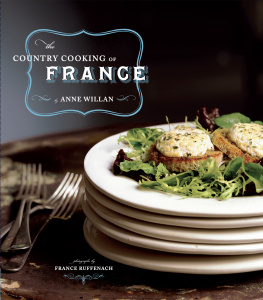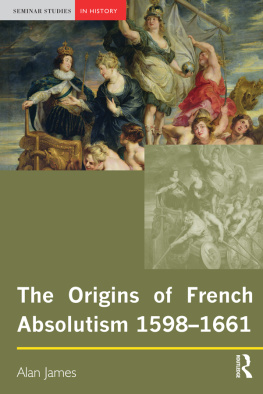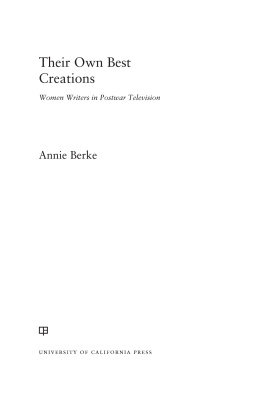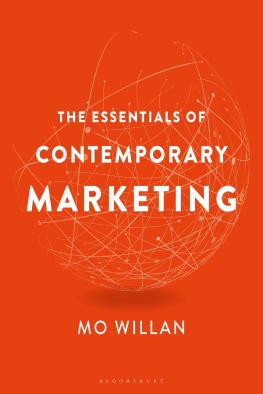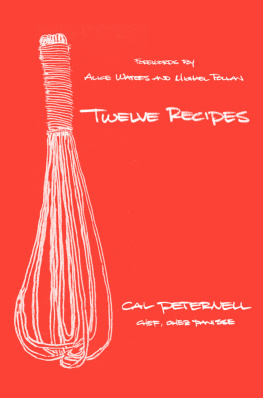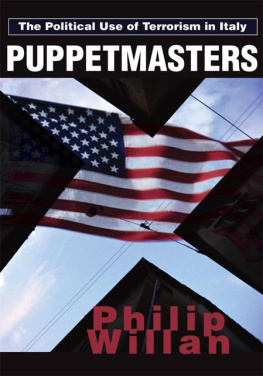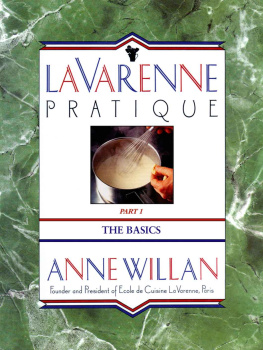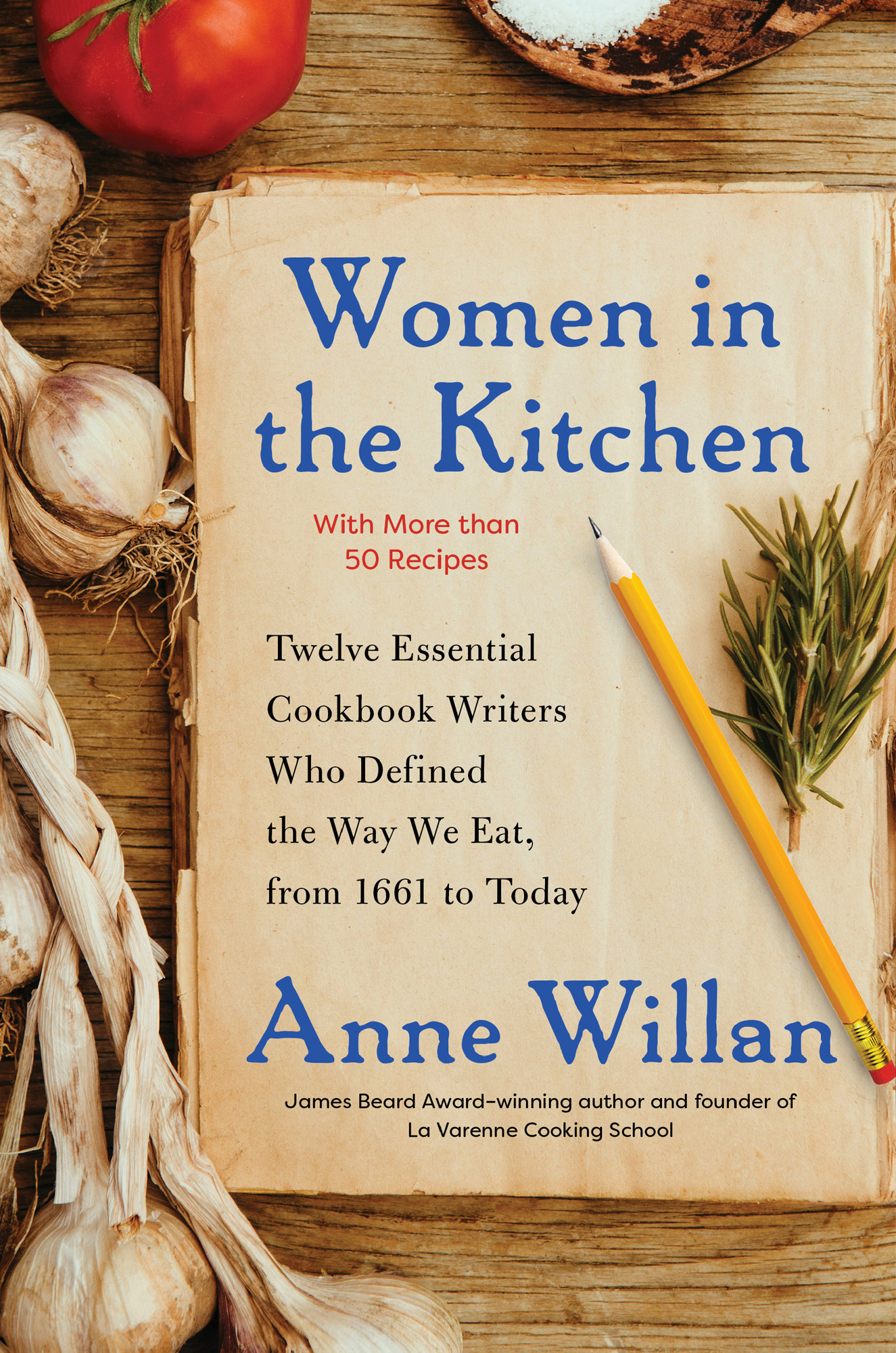CONTENTS
Guide
Also by Anne Willan
Great Cooks and Their Recipes
Grand Diplme Cooking Course, 20 volume series
French Regional Cooking
La Varenne Pratique
Look & Cook, 17 volume series
Perfect Cookbooks, 9 volume series
Cook It Right
In & Out of the Kitchen in Fifteen Minutes or Less
From My Chteau Kitchen
Cooking with Wine
Good Food No Fuss
The Good Cook
The Country Cooking of France
The Cookbook Library
One Souffl at a Time: A Memoir of Food and France
Secrets from the La Varenne Kitchen
How to Cook Absolutely Everything
Best Recipes for Absolutely Everything
Bistro Cooking
French Country Cooking
Chteau Cuisine
Real Food: Fifty Years of Good Eating
Classic French Cooking
La Varennes Paris Kitchen
The Observer French Cookery School
La Varennes Basic French Cookery

Scribner
An Imprint of Simon & Schuster, Inc.
1230 Avenue of the Americas
New York, NY 10020
www.SimonandSchuster.com
Copyright 2020 by Anne Willan, Inc.
All rights reserved, including the right to reproduce this book or portions thereof in any form whatsoever. For information, address Scribner Subsidiary Rights Department, 1230 Avenue of the Americas, New York, NY 10020.
First Scribner hardcover edition May 2020
SCRIBNER and design are registered trademarks of The Gale Group, Inc.,used under license by Simon & Schuster, Inc., the publisher of this work.
For information about special discounts for bulk purchases, please contact Simon & Schuster Special Sales at 1-866-506-1949 or .
The Simon & Schuster Speakers Bureau can bring authors to your live event. For more information or to book an event contact the Simon & Schuster Speakers Bureau at 1-866-248-3049 or visit our website at www.simonspeakers.com.
Interior design by Erich Hobbing
Jacket design by Jaya Miceli
Jacket photographs by Viktor Pravdica/Alamy Stock Photo;
Pencil by classen Rafael/Eyeem/Getty Images
Library of Congress Cataloging-in-Publication Data has been applied for.
ISBN 978-1-5011-7331-8
ISBN 978-1-5011-7333-2 (ebook)
Photo credits: , Alice Waters: courtesy of MasterClass.
To Mark who collected these books.
From Anne who uses them.
Very much love
ACKNOWLEDGMENTS
I wish to thank:
Lisa Ekus, my agent who so happily joined me with Kara Watson, my wonderfully helpful editor at Scribner. Thanks also to Kate Slate for her careful copyedits and the rest of the team at Scribner.
Todd Schulkin, editor, manager, and friend, who has guided this book through proposal to contract, to final manuscript and printed text.
Susan Broussard, whose watchful eye in the La Varenne kitchen ensured that my modern versions of recipes from twelve historical cooks work perfectly with todays ingredients. She had the enthusiastic help of staff members Nicole Litvak, Daylin Ramirez, and Elizabeth Weinstein.
Lauren Salkelds sharp eye and insight in editing the final recipe text has been invaluable.
Alexandra Wright has edited the final text, uniting text and recipes to complete the finished manuscript with great dexterity and skill. She has also dealt so patiently with my last-minute inspirations.
Working with all of you has been such a pleasure.

A woman cook bastes meat on a spit in front of the open fire. On the table behind her lies a cookbook with instructions for the task at hand. In the background, a male server takes plates out to the unseen dinner table.
INTRODUCTION
Over the centuries, millions of women have cooked in the kitchen but far fewer have written down what they learned. And far, far fewer have seen their words in print. The first womans cookbook published in English was The Queen-like Closet, or Rich Cabinet by Hannah Woolley. It appeared in 1670, less than six years after a great fire destroyed most of medieval London. The urge to document what still existed must have been compelling, and in a supplement to the 1681 edition Mrs. Woolley observes:
Ladies, I hope your pleasd and so shall I,
If what Ive Writ, you may be gainers by:
If not; it is your fault, it is not mine,
Your benefit in this I do design.
Much labour and much time it hath me cost;
Therefore I beg, let none of it be lost.
The underlying motive for writing a cookbook has not varied over the years: it is to document recipes, including both ingredients and cooking methods, for current reference and to be handed down to future generations. In A New System of Domestic Cookery for example, published in 1806, Maria Rundell recorded the principles of household management for her three daughters, a book that circulated widely throughout the 1800s on both sides of the Atlantic. She wanted to pass down her own knowledge, and a similar urge to share the joys of cooking, of getting the texture, appearance, and flavor just right, has inspired so many cooks to write down what they have learned.
This book about women in the kitchen is informed by a collection of two-thousand-plus cookbooks that, thanks to my husband, Mark Cherniavsky, was built up over the more than fifty years I have been writing about cooking. Many of the books are by men, but most of the active, recipe books, the ones I take into the kitchen, are by women. They begin with Hannah Woolley, who was a sort of auntie offering hints on makeup and medicine, crochet and cookery. Her six children Im sure thrived on her Scotch Collops, Bisket Cakes, Candied Carrots, Gooseberry Fool, Pippin Pies, and other such delights.
Ever since working at Gourmet magazine in the early 1960s, I have developed the habit of assessing an authors recipes: Are they clear and precise, can you see the food on the plate, and, above all, would you want to eat it? Myself, I cannot resist the brilliant, erratic Hannah Glasse who eloped at age sixteen with a junior army officer and was briefly dressmaker to the kings sister, Princess Charlotte, and whose The Art of Cookery Made Plain and Easy (1747) dominated the field of English cookbooks for more than fifty years. Then there is Amelia Simmons whose American Cookery (1796) sums up the hardscrabble kitchen of early New England with such clarity. And in the last fifty years come the cooks I knew personally, authoritative Marcella Hazan, Julia Child who was a close friend (and a second grandmother to my own children), and now Alice Waters who shares my affinity for France.
I have chosen twelve cookbook authors and each is described in a biography followed by a handful of their own recipes as they appeared in the original, together with those same recipes adapted for the modern kitchen. Together these books trace the development of domestic cookery in England and America as recorded by women, whose position and career paths in both countries were very different from that of men. The general cooking style of women was different, too: Womens recipes tend to be simpler, warm-hearted, easier to execute, requiring less equipment, and calling for less expensive ingredients. Women cooks mark festivities, with recipes like A Rich Plumb Cake, or Election Piea cold savory meat pie best prepared well in advance so the flavor mellows. It is often the women in the kitchen who set the scene, and establish the family tastes, particularly of the children. I think of my mothers crispy ginger biscuits that, more than seventy years ago, I learned to dip in a mug of hot milky tea.


